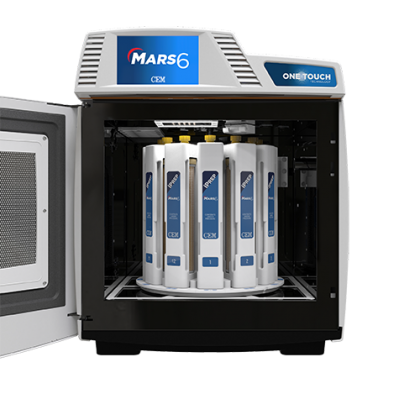Microwave Digestion Oven
CEM Mars 6 Microwave Digestion System
In order to analyze metals using combined analytical method, the solid sample (e.g., soil, sewage sludge, mixed waste, oil, plastics, metals and alloys, rocks, etc.) should be transferred into solution prior to testing. Wet digestion is a classical technique that requires complex mixtures of acids for sample decomposition. Microwave digestion is a convenient and timesaving closed-vessel method compared to the traditional approach of open beakers on hot plates. Samples are digested for metals analysis in sealed TFE-lined bombs placed in a microwave oven.


EPA methods:
- Method 3015 - Microwave assisted acid digestion of aqueous samples and extracts;
- Method 3031 - Acid digestion of oils for metal analysis by flame atomic absorption or ICP spectroscopy;
- Method 3050B - Acid digestion of sediments, sludges, and soils;
- Method 3051 - Microwave assisted Acid Digestion of Sediments, Soils, Sludges, Soils, and Oils;
- Method 3052 - Microwave Assisted Acid Digestion of Silicious and Organically Based Matrices;
- Method 3060 - Alkaline Digestion for Hexavalent Chromium.
